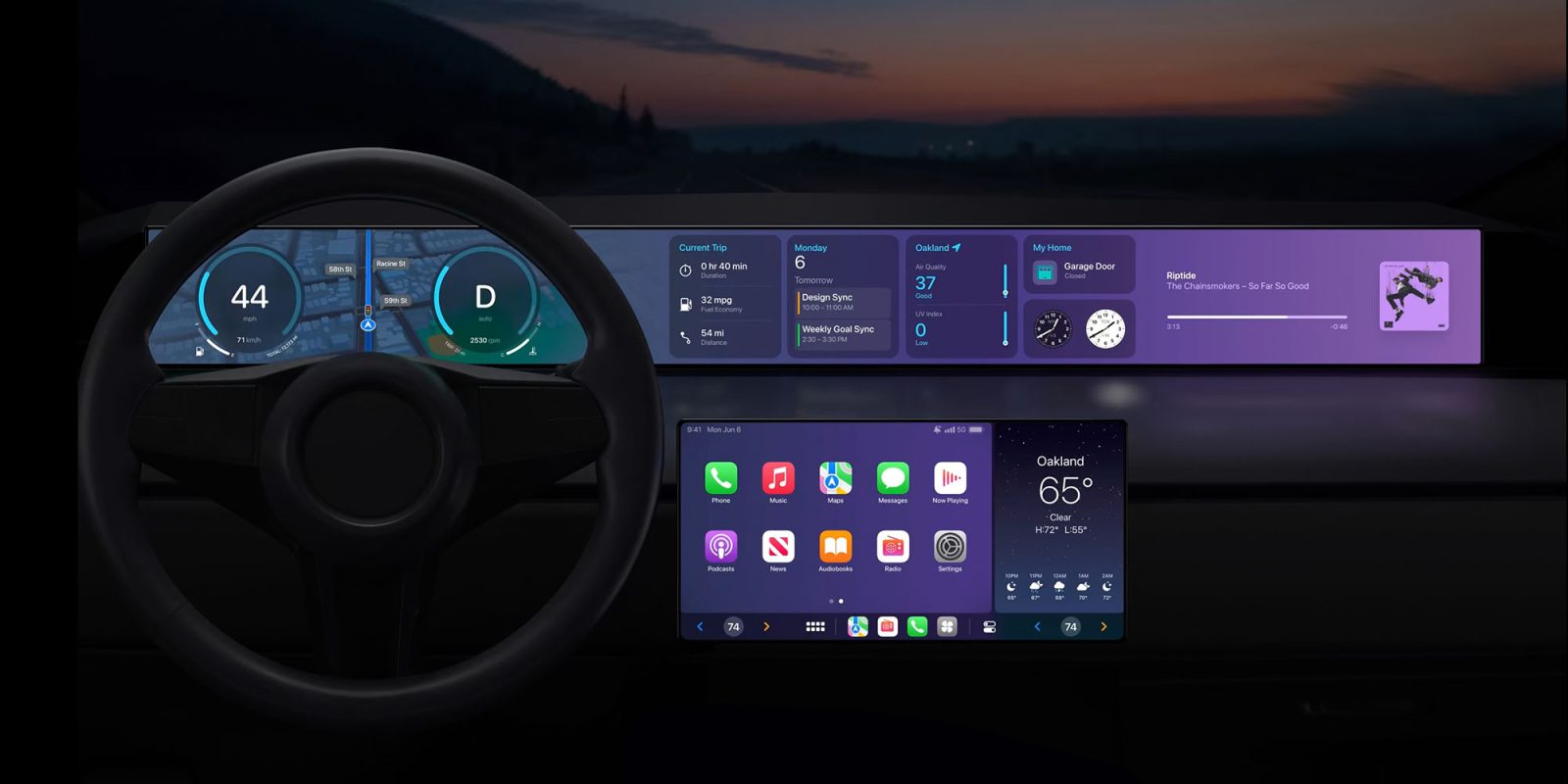WWW.CNET.COM
Best Sleep Headphones of 2025
Ozlo Sleepbuds Best overall sleep headphones $299 at Ozlo Anker Sleep A20 Earbuds Best wireless earbuds with Bluetooth for sleep $150 at Amazon QuietOn 3.1 Earbuds Best active noise-canceling headphones $277 at QuietOn Manta Sound Sleep Mask Best 2-in-1 sleep mask and headphones $143 at Manta Sleep SoundOff Sleep Earbuds Best noise-masking sleep headphones $180 at SoundOff SleepPhones by AcousticSheep Best sleep headband for side sleepers $40 at Amazon Musicozy 5.2 Sleep Headphones Best budget headband headphones for sleep $20 at Amazon Maxrock Sleeping Earbuds Best budget wired earbuds for sleeping $16 at Amazon Falling asleep with your headphones on is nothing new, but not all headphones are good at making you fall asleep and stay asleep longer. This is especially true if youre a light sleeper who can wake up at the slightest sound. Whether you want to block out the world with white noise or fall asleep to relaxing music, a good pair of sleep headphones can alter your sleep quality greatly.I've always been a light sleeper and the slightest sound disrupts my slumber. I've had disturbed sleep due to a variety of reasons, whether from city noises outside our downtown apartment, our cat taking a bath next to my head or my husband snoring. I even tried white noise machines and playing YouTube scenes on the TV to drown out the annoying noises, but these solutions didn't always work. Not to forget, they can be potentially annoying for your partner if they don't like listening to it. That's what led me to try sleep headphones.Some folks, including me, have sensitive ears or dislike plugging your ear canals with earbuds. Luckily, you can get sleep headphones come in all shapes, sizes and functionalities. You can get them as bands that wrap around your head, earbuds with Bluetooth, active noise-canceling headphones and more. Regardless of which type you pick, the right pair of sleep headphones can help you calm down, lower your blood pressure and slow your heart and breath rates -- all vital for deep, quality rest.Our CNET sleep team has been testing mattresses and sleep-related products and accessories for years. After sleeping with over a dozen sleep headphone brands, we've rounded up the best options on the market.What are the best overall headphones for sleeping?The Ozlo Sleepbuds take the crown as the best overall sleep headphones due to their comfortability and functionality. In addition to streaming your own audio, you can block out extraneous noises by listening to soothing soundscapes from its built-in sound library. These headphones also have a neat alarm feature. Best headphones for sleeping David Carnoy/CNET Battery life Up to 10 hoursANC, PNC or other Passive noise cancelingHeadphone type In-earConnection type Bluetooth When they were first released back in 2018, Bose's noise-masking Sleepbuds were hailed as game-changers for light sleepers and those dealing with sleeping partners who snored. Alas, Bose ran into some issues with the battery on both the original model and the second-gen version and ended up discontinuing the Sleepbuds, much to the chagrin of a lot of folks who really liked them. Well, three former Bose engineers acquired the rights to the Sleepbuds and have now come out with new Sleepbuds under their new Ozlo brand. They feature the same design as the original Sleepbuds -- both the buds and charging case essentially look identical -- but have a key new feature: you can now stream other audio to the buds from your phone over Bluetooth (the original Sleepbuds just stored the noise-masking sounds on the buds and didn't allow for streaming music).How they sleep: One of the Sleepbuds' biggest strengths is how tiny they are and how comfortably they fit most people's ears (they come with four different-sized ear tips). I didn't have any wearability issues with them even though I'm a side sleeper. How they sound: They're not active noise-canceling earbuds, they have good passive noise isolation and do a very good job eliminating ambient sound when you apply one of the masking sounds, whether it's waves crashing on the beach, falling rain, the crackling of a burning fire and more. You can also set a personal alarm to go off in your ears so your sleeping partner isn't disturbed and the buds can sense when you've fallen asleep while listening to music and automatically kick in your chosen noise-masking sound. Finally, there are also some sleep-monitoring features.I can't say everything worked perfectly all the time and I think Ozlo is still working out the kinks with its companion app for iOS and Android. When streaming music -- don't expect much bass but the sound was better than I thought it would be -- you have to keep the buds' case nearby because the case is used for streaming -- and charging (the buds are rated for up to 10 hours of battery life). All in all, I was impressed with this new iteration of Sleepbuds and hope there are no battery issues going forward.Pros:Has a sound libraryCan stream your own audioGreat at noise maskingComfortable for all sleeper typesCons:ExpensiveYou have to keep the case nearby for streaming $299 at Ozlo $299 at Amazon Screenshot by David Carnoy/CNET Battery life Up to 14 hoursANC, PNC or other Passive noise cancelingHeadphone type In-earConnection type Bluetooth Anker's second-generation sleep buds offer some modest but important improvements, including better battery life and new "Twin-Seal" ear tips instead of single-layer ear tips that provide a tighter, more comfortable fit and 3x better passive noise reduction, according to Anker. Like the earlier Sleep A10 buds, the Sleep A20 buds are tiny and lightweight and have a good value compared to sleep buds like the Ozlo Sleepbuds, which cost more and have similar features.How they sleep:Their flat design means they fit entirely inside your ear (or at least most ears), making them suitable for side sleeping with your ear resting against the pillow. They're quite comfortable for in-ear earbuds, although if you don't like having an ear tip covering your ear canal, I can't guarantee you'll be able to wear them all night. I like the fit of the Ozlo buds slightly better, but the Sleep A20 buds fit my ears well overall.How they sound:To be clear, there is no active noise canceling. The buds themselves passively block out some ambient noise, and then you can choose to play one of a wide selection of sleep noises, including white and brown noise, plus the typical soothing sounds of nature (rain, chirping birds, fire crackling, waves crashing) that help mask external sounds like your partner's snoring.The Sleep A20s also feature the ability to play your own music and audio via Bluetooth 5.3 from your phone or another device. The sound isn't half bad, considering how small the buds are. They're a bit bass-shy but should sound "good enough" for most folks.As mentioned, the battery life has also been improved. You can now get up to 14 hours on a single charge for sleep sounds or closer to 10 hours if you're using Bluetooth. The charging case stores an additional 55 hours.With their MEMS sensor, these headphones can also track your sleeping positions and movements throughout the night, providing sleep data and analytics. You can also set an alarm that sounds on the buds so only you, not your sleeping partner, hear it. The Sleep A20 Earbuds are among the most feature-rich sleep buds I've tested.Read about our first thoughts on the Soundcore A20 Earbuds by Anker Sleep. Pros:Sound library and streaming capabilitiesFlat, ergonomic designGreat quality for the priceCons:Do not actively cancel noise Aly Lopez/CNET Battery life 28 hoursANC, PNC or other Active noise canceling (ANC)Headphone type In-earConnection type None The QuietOn 3.1 Sleep Earbuds are nearly three times smaller than the Apple AirPods. They effectively cancel lower-frequency, consistent sounds such as snoring, car traffic, a running dishwasher or the bass from songs your annoying neighbor blasts at midnight. The earbuds come with foam tips in four different sizes so you can find the right fit for you.How they sleep: The QuietOn 3.1 Earbuds are surprisingly tiny and light, fitting snugly into your ears so you can sleep in every position, including your side -- although, at first, I had to adjust my head while sleeping on my side to prevent unwanted pressure from the earbud against the pillow. I typically don't like wearing earbuds, but I found these to be more comfortable than most other brands I've tried.For the active noise cancellation to work correctly, you have to wear the right size of foam tip in your ears. The fit should be snug and airtight, which may be uncomfortable for those with extremely sensitive ear canals. I tried the XS and small sizes before finding the medium was much more effective at reducing the noises around me.How they sound: These headphones do not have Bluetooth or connectivity; instead, they actively cancel out ambient sounds by generating opposite waveforms against the noise. This technology does not create any sound you can hear, like faint white noise, contrary to what I had expected. They're like advanced earplugs -- the goal is quietude. It's important to note that these headphones do not block everything. You can still hear higher-frequency sounds and sudden noises, which can be good if you still want to hear certain things, such as your alarm clock.I tried a few simulations and found that it significantly reduced lower-frequency sounds. As for snoring, I could still hear it faintly next to me when the snoring simulation was at full volume, but it was much less noticeable.The QuietOn 3.1 Earbuds come with a compact carrying case for easy traveling and charging. The headphones' materials are high-quality and durable, and the battery life is impressive, lasting up to 28 hours on a single charge. At nearly $300, they're expensive, but if you're consistently losing sleep because of snoring and other disruptive noises, these may be worth it. Pros:Effective low-frequency noise cancellationSmall earbuds create a comfortable and secure fitLong battery lifeCan sleep in any positionCons:ExpensiveCan't play your own audioWon't remove or block all sounds $277 at QuietOn Aly Lopez/CNET Battery life Up to 20 hoursANC, PNC or other Noise maskingHeadphone type Over-ear headbandConnection type Bluetooth We chose the Manta Sound Sleep Mask as the best two-in-one sleep accessory and one of the best for side sleepers. It has tapered C-shaped eyecups that you can move and adjust to fit comfortably. I love that the eyecups are spacious enough to prevent pressure on your eyes and keep your eyelashes from being smushed -- a bothersome element of most other sleep masks.How they sleep: The adjustable C-shaped eyecups allow you to lie comfortably in any position, including side sleeping. It's surprisingly comfortable, considering its bulkier design. I've never woken up at night because the mask caused discomfort. Thanks to its perforated design for ventilation, it doesn't make me overheat like I thought it would. With a battery life of up to 20 hours, you can wear Manta Sleep for two to three nights without charging it.How they sound: The Manta Sound Sleep Mask's sound quality is impressive. Like most other sleep headphones, songs with heavy bass sound slightly tinny at full blast but are around half to three-quarters volume are perfectly acceptable. These headphones do a great job of creating more of a surround-sound experience, and the speakers are adjustable, so you can slide them to wherever is comfortable on your ears.My only qualm is that it tends to slide off at some point as I toss and turn, and I wish the velcro on the back was grippier. It effectively blocks out the light in our bedroom, which is saying a lot because we live in the heart of a city, and our bedroom has large windows with only a day shade.Runner-up: The more affordable Lightimetunnel Sleep Headphones from Amazon are ergonomic and made of soft, breathable material that's comfortable for wearing over your eyes.Pros:Sleep mask and headphones in oneAdjustable eyecups for sleepingMachine washable after removing electronicsGreat for daytime nappingCons:Bulkier designVelcro strap is not very stickyOn the expensive sideRead more about the Manta Sound Sleep Mask in our full review. $143 at Manta Sleep Dillon Lopez/CNET Battery life Up to 16 hoursANC, PNC or other Noise maskingHeadphone type In-earConnection type None The SoundOff Sleep Earbuds have unique functionality and design. There's no Bluetooth connection, so you can't play your audio; instead, these headphones use proprietary technology to emit a pink noise that specifically masks the frequencies of snoring and other noises that can disturb your sleep.How they sleep: These earbuds are comfortable (even for smaller ears) yet take some getting used to. Whenever I take them out after wearing them for a while, I've noticed that it leaves a lingering sensation of the earbuds still being in and around my ears for a while -- but again, I have particularly sensitive ears. With its bendy, moldable material and distinctive shape that hugs around the back of your ear like a hearing aid, they stay on securely -- much better than others we tested. They're also comfortable for all sleep positions, including side sleeping and combination sleepers who flop around at night.The memory foam tips mold nicely to your ears, creating a snug fit. Each headphone has a volume button on the bottom, so you have to adjust them individually. I personally don't love having to adjust them separately, but it could come in handy in certain scenarios -- such as wanting to wear only one earbud or having hearing loss or sensitivities in one ear and not the other.How they sound: These headphones emit a pink noise that sounds like ocean waves, which is a calming soundscape shown to improve sleep. Pink noise has high and low frequencies, helping to drown out distracting noises of various tones and pitches. These headphones don't completely block out super loud noises (with the TV on high volume, I could still faintly hear it through the headphones) but sufficiently mask out most sounds -- especially snoring. My partner spends a good chunk of the night snoring, and I can't hear him at all with these on.They come with a neat charging case that can charge your SoundOff Earbuds for up to seven days before the case needs to be charged again. For that reason, they're super portable and great for traveling with.Runner-up: The Bedphones Sleep Headphones are another highly rated option. They have super thin on-ear speakers with a wire that also wraps around your ears. You can choose between wired or wireless. Each comes with an in-line microphone, so you can also answer phone calls with them.Pros:Pink noise effectively masks snoringBattery lasts up to 16 hoursComfortable, moldable fitComes with a recharging caseCons:Cannot play your own audioExpensiveHave to adjust volume on each earbud separately $180 at SoundOff Aly Lopez/CNET Battery life Up to 24 hoursANC, PNC or other Noise maskingHeadphone type Over-ear headbandConnection type Bluetooth The SleepPhones Headband by AcousticSheep is soft and comfortable. With its various colors, sizes and material options, you can find the perfect one for your preferences. I tested a small size of the Wireless Bluetooth Sleep Headphones in the breeze fabric, and I like how snugly the headband fits around my head. It doesn't slide around too much as I switch positions at night.How they sleep: This thin headband is comfortable in any sleeping position, including your side. You can adjust the position of the speakers by sliding them to the correct spot over your ears inside the headband. The main Bluetooth module piece is on the back of the headband, so I can feel it slightly when lying on my back, but it's not uncomfortable or bothersome. I appreciate that the battery lasts up to 24 hours on a single charge and that the band is machine-washable once you remove all the electronic components.You can also wear this band while working out, but if you plan on doing that, I recommend the moisture-wicking breeze fabric option rather than the fleece. I also advise opting for the breeze fabric if you sleep hot, as the material is more breathable. On the flip side, the fleece option is ideal for those who want a warm and cozy headband. The brand also offers RunPhones Headphones specifically for working out and running.How they sound: If you're listening to a song with a lot of bass on full blast, the sound quality isn't great (and my partner could hear it lying next to me). If you're wearing these to bed, you're likely listening to gentle soundscapes, an audiobook or podcast or calming music;










